by Ian Stonebrook
–
What do you get when you cross a sock and a lawnmower?
The conventional answer is a cloud of cotton, but the abstract explanation is the Air Jordan 11.
To get to the sock and lawnmower, we have to go back, way back when Mike had hung up his #23 tagged crew cuts in favor of the grass cut in spring training.
The year was 1994 and Michael Jordan was far removed from the hardwood, bussing to batting practice in Birmingham, AL. Due to burnout from fame, fatigue from three straight Finals trips and the heartache from his father’s untimely death, Michael Jordan had retired from basketball only months earlier in the fall of ‘93. After an unprecedented press conference and a switch in sports, the whole world was suddenly certain that the greatest player to ever touch a basketball was done with the game he made global.
Everyone except Tinker Hatfield.

Hatfield, the University of Oregon pole vaulter turned denoted designer, had come to know Michael in a personal way that would redefine the relationship between athlete and brand. After all, it was Hatfield who came in to save the Beaverton brand with the pivotal Air Jordan 3. Despite Tinker’s resume of hits highlighted by his ability to trust his gut, the company he made billions was certain that Mike was finished with hoops and his Air Jordan line was meant to be finished just the same.
Yes, in 1994 Nike was radically ready to be done with the Air Jordan franchise. Upon Mike’s retirement, the Air Jordan 9 was already in production, facing an uphill battle with MJ no longer lacing them in NBA action. From a sales standpoint, its successor would be even worse. Upon release, the Air Jordan 10, more meant to celebrate MJ’s accolades than transcend technology, was absolutely shut out of Europe when it came to pre-booking pairs.
With Mike sitting out the entire 1993-94 campaign and Nike readying retros in an effort to celebrate a decade of greatness and run back the hits, the Air Jordan franchise was by all estimates set to stop at an even 10 with no notion of continuation.
Tinker had always trusted his gut, but this time was his gut actually wrong?

While the line was set on stopping, Tinker Hatfield was not.
“I was bound and determined to keep the line going,” Tinker told an interviewer in his episode of Netflix’s Abstract.
Sketching sneakers for MJ to play basketball in based on a gut feeling that the GOAT would eventually return, Tinker went rogue and took his work home due to doubters at Nike – which Hatfield publicly referred to as “assholes” in a 2012 interview with Gentlemen’s Quarterly – inspired by faith but also hellbent on proving his peers wrong.
Very wrong.
In early sketches dated August 1st, 1994, Tinker Hatfield appears both inspired and bewildered. Demands jotted in all caps include “MICHAEL NEEDS TO BE INVOLVED!” while questions range from re-commissioning the iconic Wings poster to whether or not the shoe should be a low top. While the shoe would wear the title the Air Jordan 11, early notes suggest Hatfield introducing the name the Jordan Beyond.
What Hatfield was doing was beyond any expectations or any office advice. By getting away from Nike HQ and designing the Air Jordan 11 in his free time, Hatfield’s crusade created more freedom in his process as the AJ11 was unlike anything Nike Basketball had ever seen before.
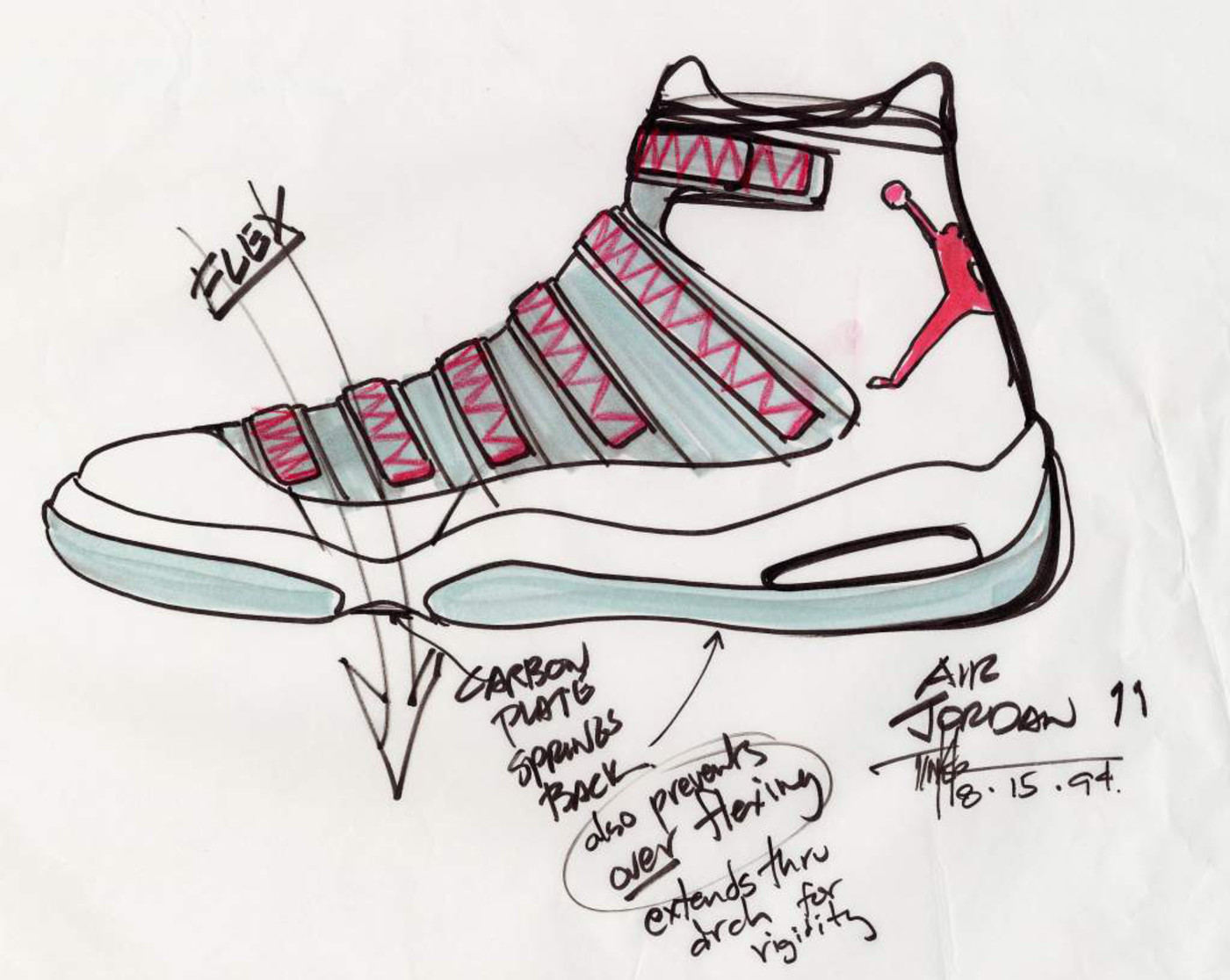
Starting from the bottom, the foundation of the AJ11 would be carbon fiber. Extracted from football and speed skating, the composite material said to be five times stronger than steel and twice as stiff. In practice, carbon fiber was known for creating torsion and propulsion when put to play. Because of this, Hatfield pondered that if carbon fiber could make a wide receiver quicker on their cuts and a rollerblader more explosive in their strides, could it do the same for MJ on the court? He had to try.
Pulling a page from his running resume, Tinker exposed the tech oh so slightly on the outsole, offering somewhat of an homage to what he did with Air back in ‘87 on the original Air Max 1. Hawking from another hit, the 11 would also feature a translucent outsole, amplifying the attribute introduced on the Air Jordan 5.
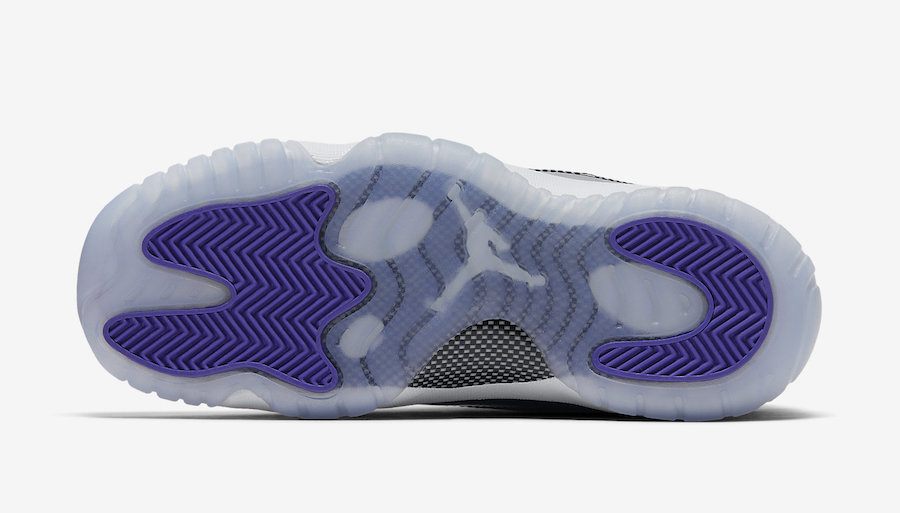
Moving up the model, a massive mudguard was created to contain all that extra torque created beneath. Hatfield was said to look at lawnmowers and sports cars for inspiration on this aspect, which makes sense as both vehicles used sleek surfaces to cover up something truly violent and explosive.
On the mudguard, flash and function would collide like never before. According to Abe Schwadron of SLAM fame, Mike had long asked for a flashier, shinier shoe. This claim has credence as Hatfield once told Nick DePaula in a piece for Sole Collector that MJ had been wanting shinier shoes for at least three years.
Adhering to his muse, Hatfield made the mudguard patent leather which proved as dapper as a dress shoe and as durable as a work boot. Just as Hatfield introduced exotic elephant print on the Air Jordan 3 to keep Mike at Nike, he wowed MJ once again on the second model set to keep the line alive.
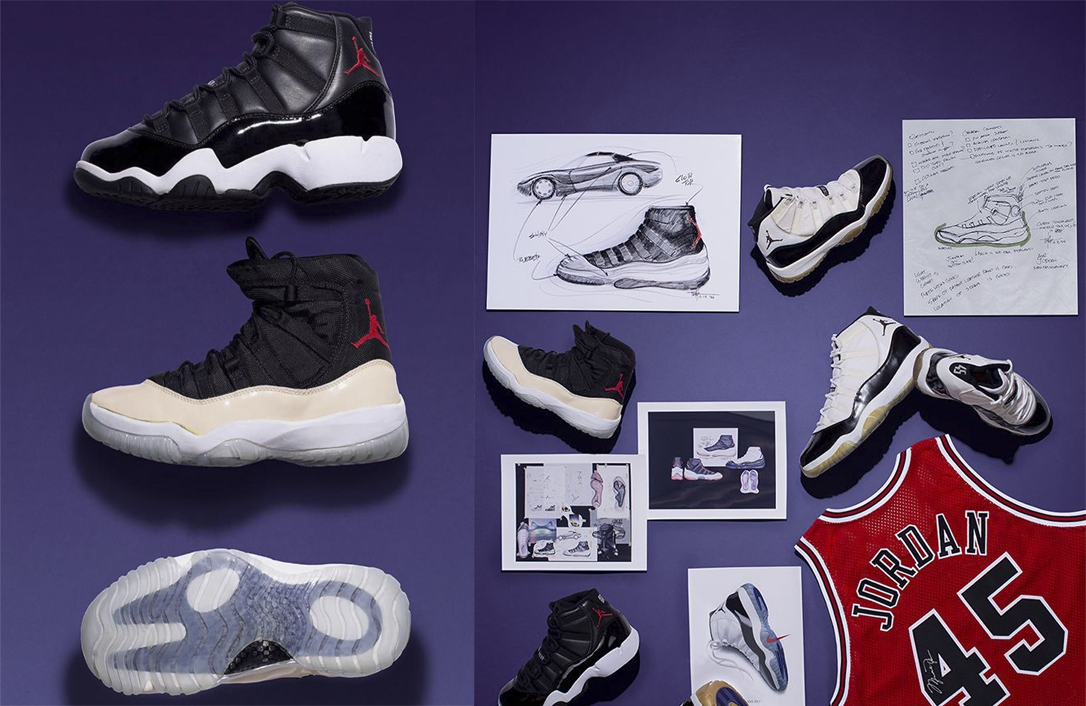
All that innovation under the hood and on the hood was enough to change the industry, and it did. However, Hatfield had even loftier goals. He wanted the upper to be laceless, like a sock, with intentions to implement stretch mesh and a molded collar up top.
While certain samples appeared as such, the eventual production model met in the middle by using strong, shiny nylons and meshes made for forward-thinking backpacks and settling for speed lacing.
By the time the Air Jordan 11 had gone from sketch to sample, Mike’s mind was moving from retirement to return. Rather than serve as a replacement player during 1995’s Major League Baseball strike, Jordan shocked the world and validated Tinker’s intuition by returning to the Bulls on March 18th. A day later, MJ was back on the court, playing his first pro game in over a year against the Indiana Pacers in front of an unprecedented TV audience for a regular-season game.
On MJ’s feet? The Air Jordan 10.
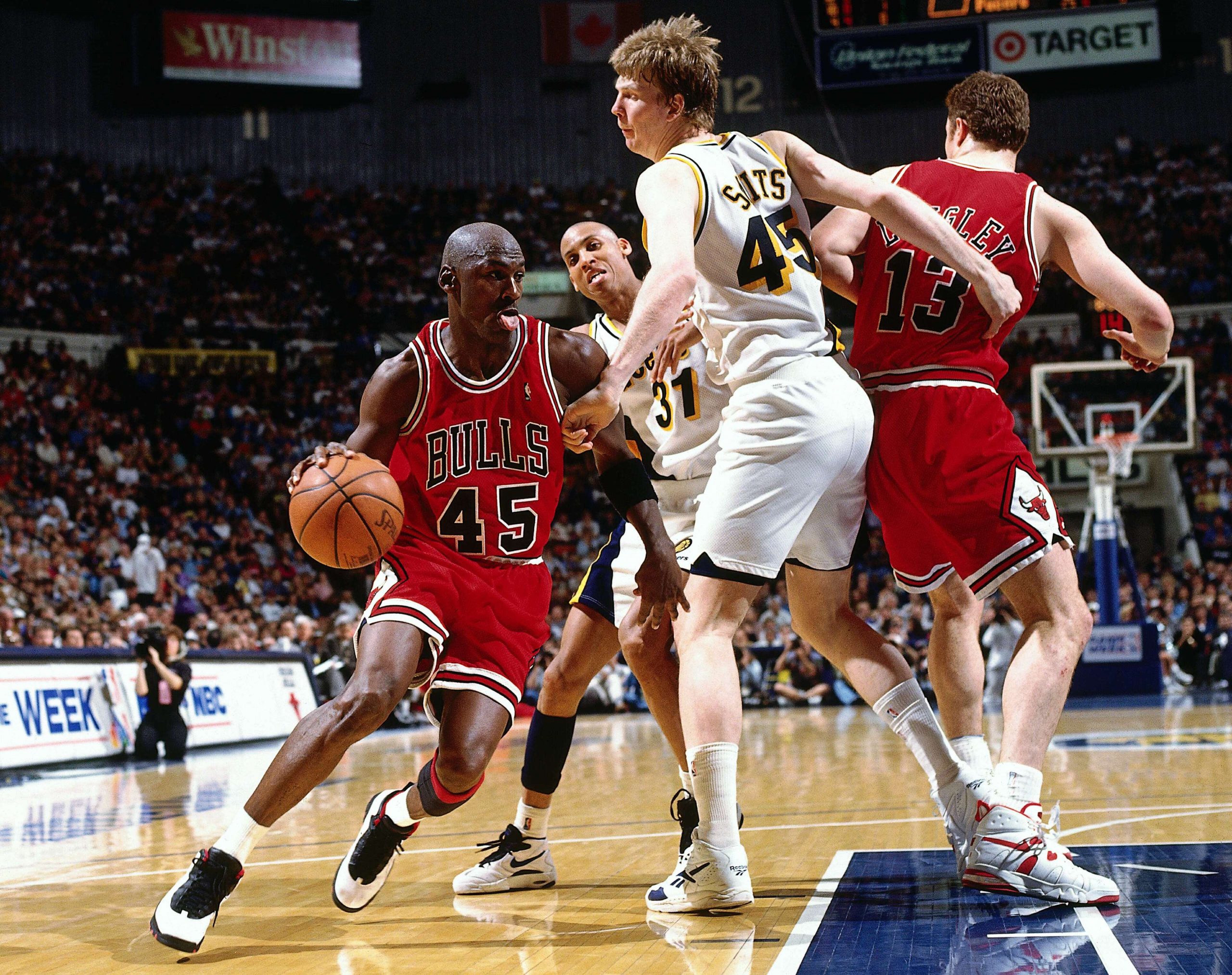
Despite Hatfield’s prophetic crusade to keep the Air Jordan line alive during MJ’s baseball sabbatical, the Air Jordan 10 was on the market and suffering in sales from the fact that Mike was yet to play in them.
With the 10s on his feet and #45 on his back, Mike would wear what was assumed to be the last Air Jordan for the last games of the 1994-95 NBA season. It was also assumed he’d wear the 10s for the entirety of the Bulls’ pending playoff run.
Once again, assumptions were wrong.
After beginning the 1994-95 Playoffs in “Shadow” Air Jordan 10s, the weight of wearing a shoe said to celebrate the end of his playing days was simply too much and the excitement of what lay ahead was insurmountable.
Because of this, Mike went rogue in the second round against the electric Orlando Magic, debuting the Air Jordan 11 to the surprise of the world, Nike execs, and the better judgment of Tinker Hatfield.
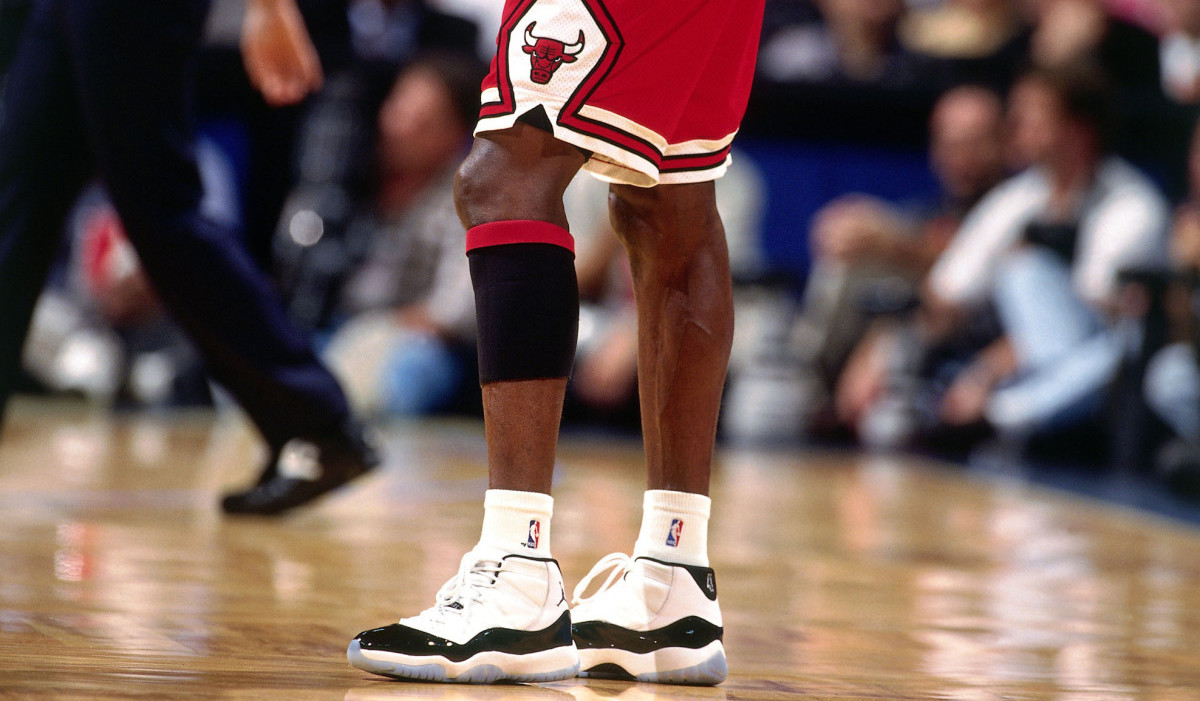
Given to Mike to test-drive, not to debut, the Air Jordan 11 worn by Mike in the playoffs against Magic was much less a production pair and much more a late-stage sample. Baring #45 tagging on the heel and a White/Black-Concord colorway that was in violation of the league dress code as his teammates were wearing black shoes.
Deja vu all over again, the rookie once fined for not matching his peers in the preseason was now the vet scolded for standing out in Orlando.
Like 1984, the NBA took action and kept the “Concord” 11s off the court for the remainder of the playoffs just as they did with “Banned” Ships over a decade prior. Phoning a friend, MJ asked Anfernee Hardaway if he could borrow a pair of his Flight Ones for a game which he did, customizing his pair by cutting off the #1 baring heel tabs.
Always owning the moment, Nike with their hands tied sent Mike a pair of “Space Jam” samples to abide by league dress codes and Mike’s demands despite the AJ11 model months from being ready for retail.
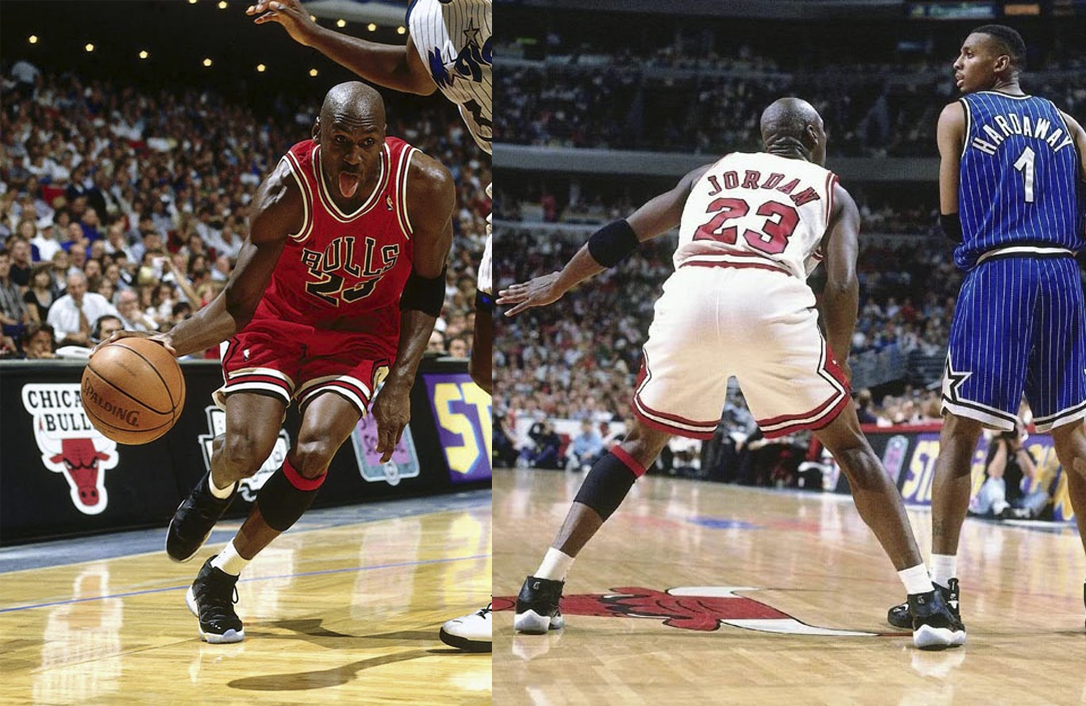
In the nights that followed, MJ would switch back to #23 but the Bulls would be ousted from the playoffs. While the unretired All-Star would be hell-bent on wreaking revenge on the Magic all summer, an unrelenting fan base would be counting down the days until they could get Mike’s new patent leather signature.
Much like the original Air Jordan 1s, fans would have to wait and wait, as the shoes wouldn’t hit stores until far after Mike made them a thing.
Truly the 1 twice over, the new 11s would absolutely crush at retail when they released in November of 1995, allowing the buzz to build for roughly half a year since they were first seen. This, by contrast, was wildly different from the calendar of an All-Star debut for the new Jordans in February with the new model hitting stores that same month.

While the league wasn’t loving the “Concord” 11s in the ‘95 playoffs due to their color blocking, Mike was mystified by them for the entire 1995-96 NBA Season.
Going a record-setting 72-10 in his revenge campaign, the GOAT was back and the Air Jordan 11 was there for all of it. Tinker’s bet on Mike proved right as did his foundation in carbon fiber as video footage verified that MJ was actually faster than before in his new shoes.
Once again the toast of the basketball world, MJ would also debut the “Columbia” colorway at All-Star Weekend in San Antonio – his first appearance at the festivities since signing off in 1993.
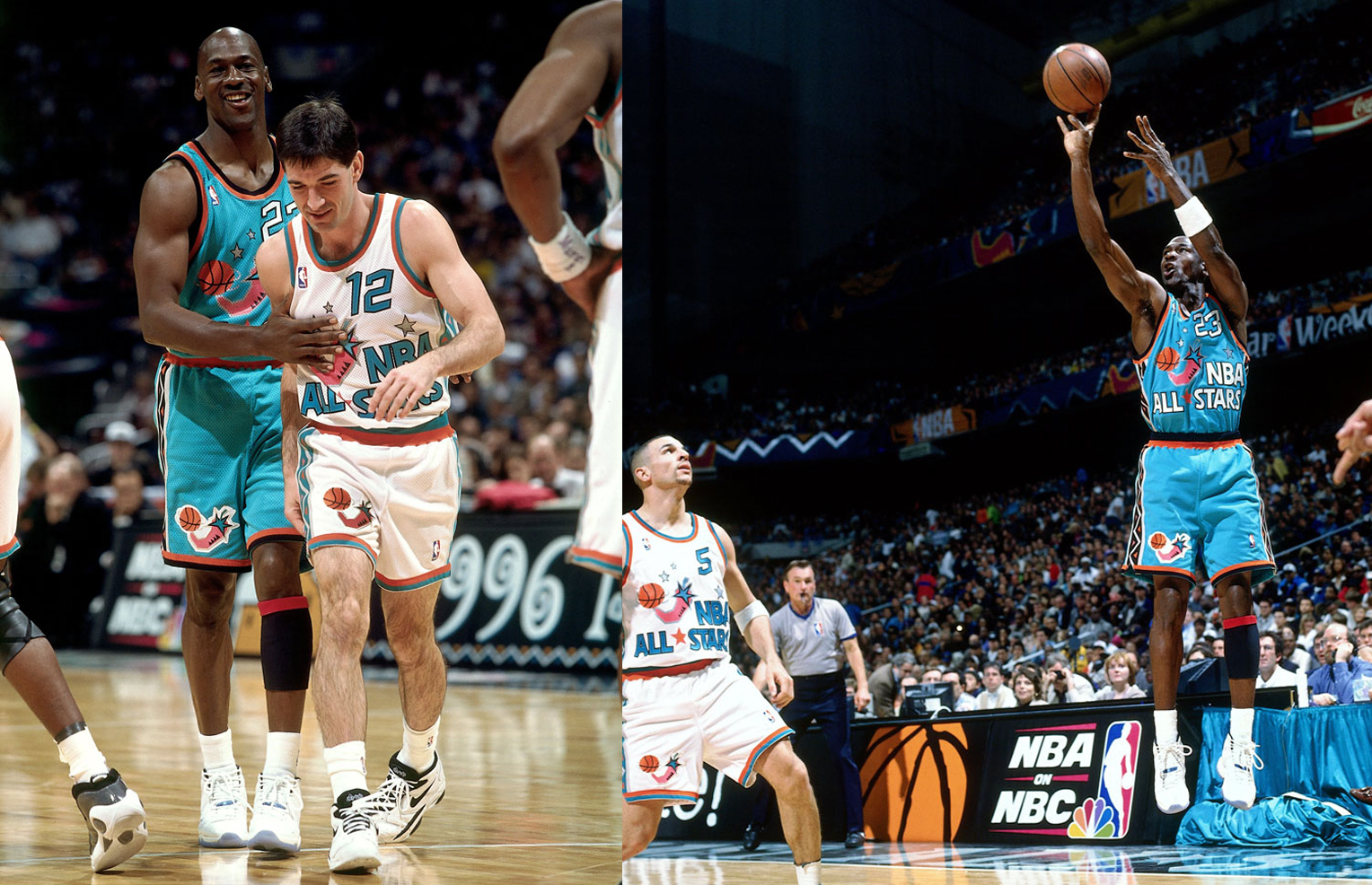
Tinker was right.
Mike was back and so was his sneaker line. The Air Jordan 11 was a sellout in 1995 and 1996 with each patent leather launch. This success would carry on into the spring and most importantly for MJ during winning time.
Rather than receive another set of fines from the NBA, Nike made Mike a Black/Red “Playoff” pair for his pending postseason run. Mike would get his revenge on the Magic en route to winning his fourth NBA title fittingly on Father’s Day.

While never meant to be made, the Air Jordan 11 endured the most memorable season in MJ’s storied career.
“It was all about having faith,” as Tinker tells it in Driven From Within. “Michael had faith in me, and I had this weird faith that he was going to come back.”
Tinker’s time tested faith was proven on the product. In previous seasons, Mike was said to absolutely destroy his Air Jordans on a nightly basis with pairs pronounced unwearable after a single session of his high-intensity play. Not the Air Jordan 11.
Ironically enough, it would be the first shoe that Tinker Hatfield created in overtime that would also be the first shoe that could survive an entire game on the feet of Mike.
While the Air Jordan 11 narrative started in the dark days of 1994, it would not end there.
Not only was the Air Jordan 11 durable for Mike on the court, but it’s also proved Teflon on the market ever since that first season. Selling sensationally in its inaugural run of OG colorways in 1995 and 1996, retirement once again played a hand in the Air Jordan 11 narrative as it was one of the first models made available again upon his second exit from the Bulls.
Receiving the retro treatment in 2000 – only five years after its initial unveil – the Air Jordan 11 absolutely smoked in stores once again. While reception to retro release in ‘94 proved lukewarm to cold with the temperature and polarity increasing only incrementally on the AJ4 in ‘99, the AJ11’s retro success in ‘00 was exponential not just for the model but eventually the entire movement.
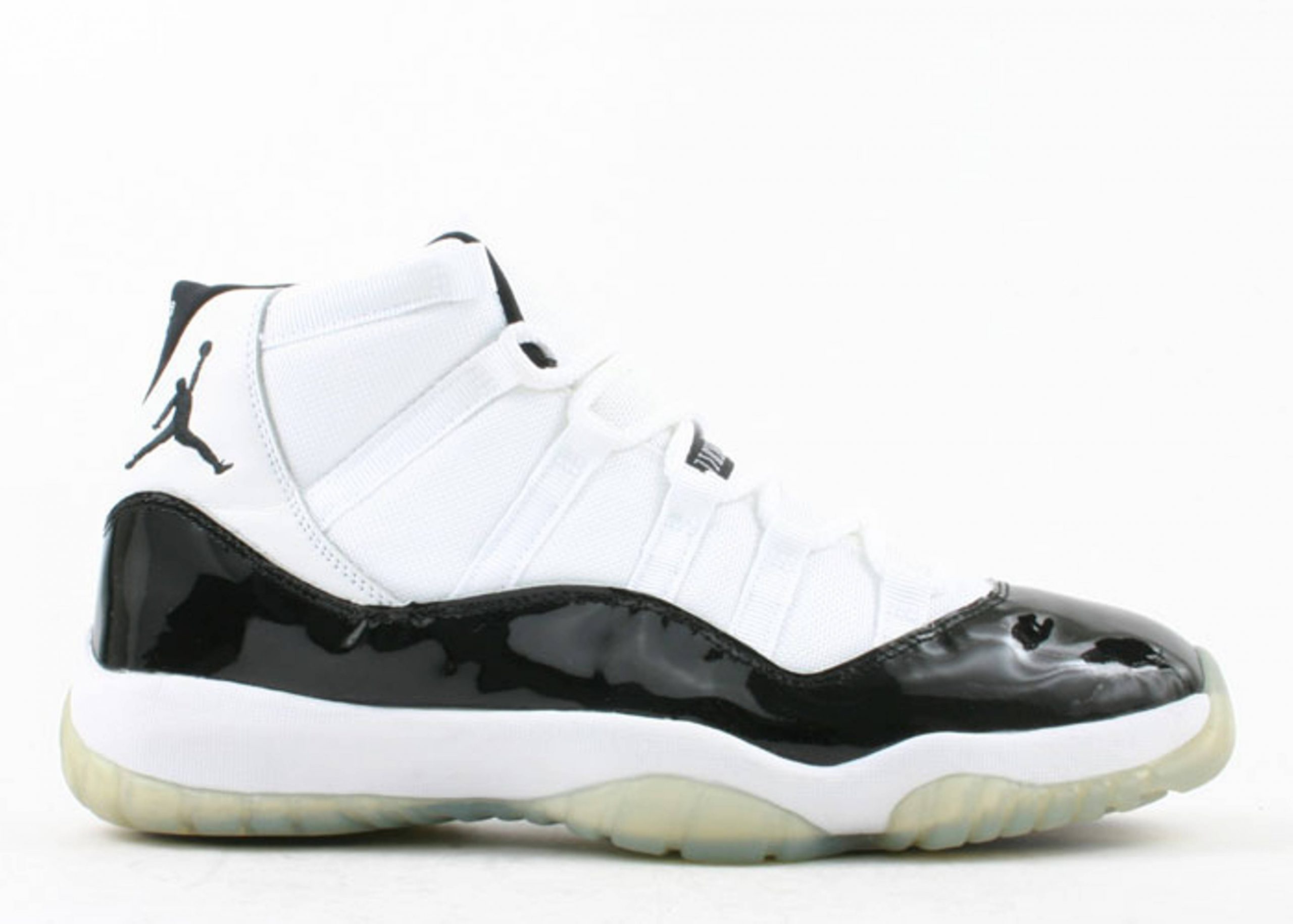
Prior to the Air Jordan 11 retro run in 2000, revived classics from Mike’s catalog were simply old shoes that appealed only to collectors. Once the 11 was back, retro Jordans started selling out the day of the drop, creating the same lines they did in 1995 and even fetching resale rates moments after purchase in the same mall.
The Air Jordan 11 was also the first retro release to set the market on fire in a new colorway, with 2001’s “Cool Grey” get-up fighting in popularity with that of the OGs. Coming back from retirement – again – MJ would lace up the retro 11 as an older member of the Washington Wizards while younger fans would have a new style to call their own.
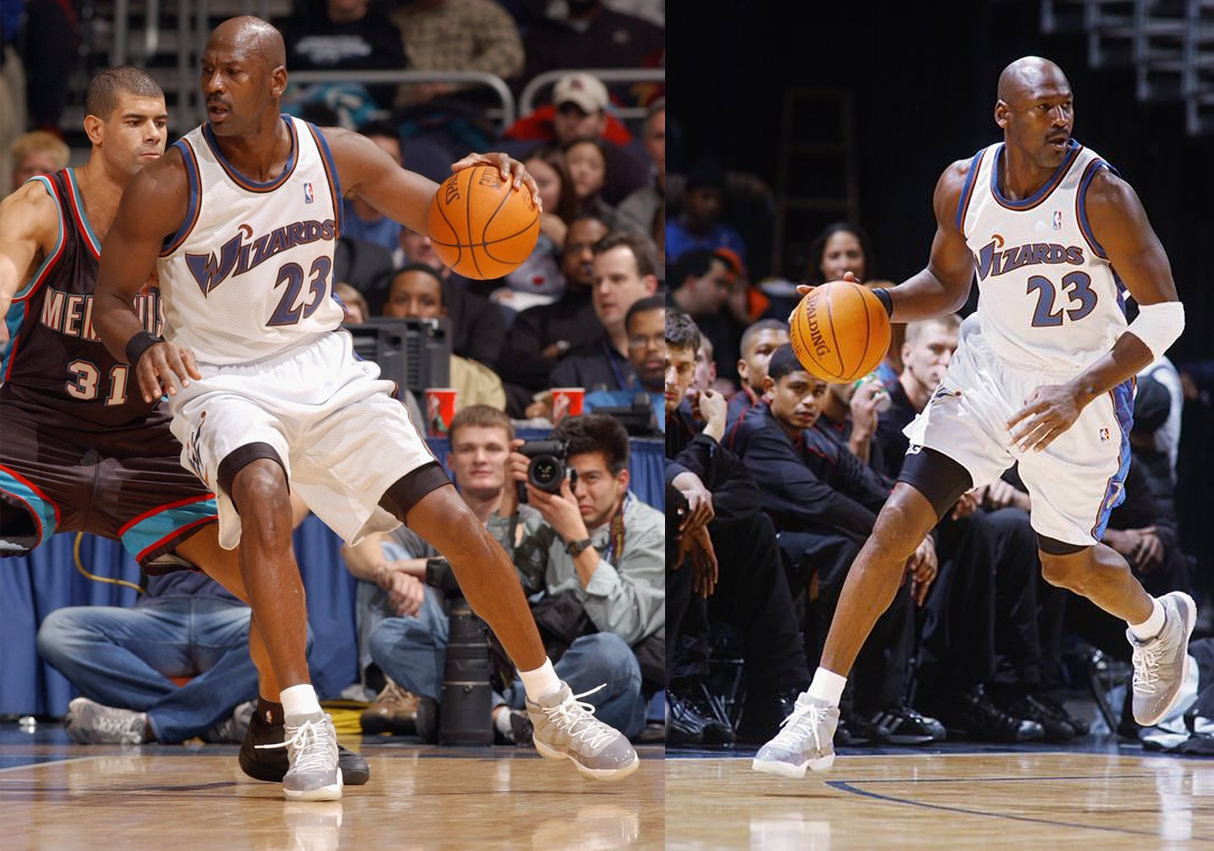
As the Air Jordan 11 turns 25, it’s important to recognize that there is no shoe quite like it. While the Air Jordan 1 was defiant to the market and created a sneaker culture centered around an active athlete, the Air Jordan 11 was defiant to the brand that birthed the market it lived in and created the retro revolution that still spans retirement.
For the majority of holiday seasons since the Air Jordan 11’s retail debut in 1995, the shoe has proven the gift that keeps on giving for sneakerheads of all ages and all descents. While certain launches were stained with violence and a demand that was miserably not met, recent releases have proved wide, safe, and accessible.
This has also proved that the Air Jordan 11 isn’t just hot when hyped by limited amounts, it’s an absolute classic in any abundance.
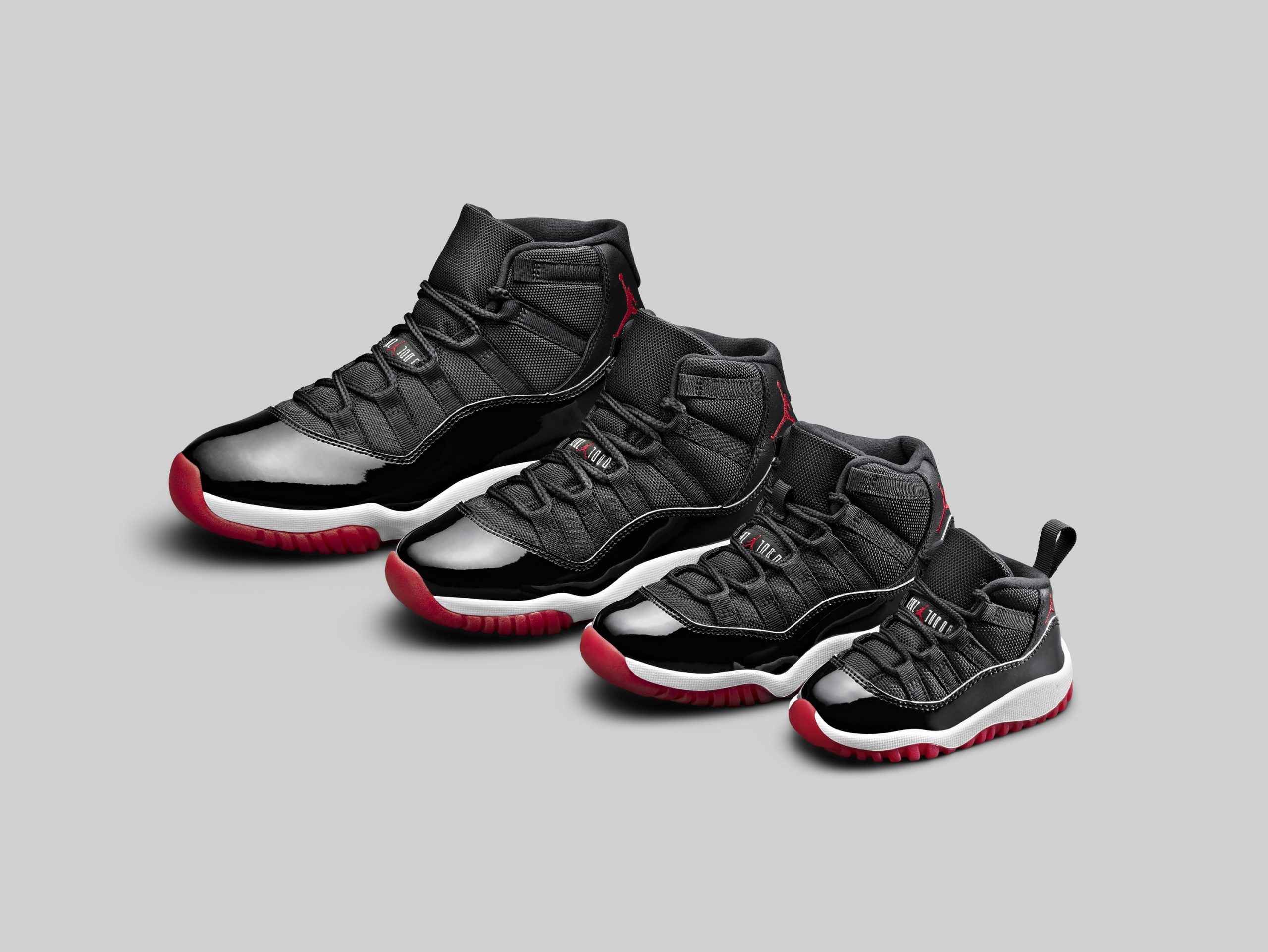
As the Air Jordan 11 looks to embark on 25 more years, the “Jubilee” launch and Adapt update of 2020 leave plenty to ponder moving forward.
Will fashion catch up to the Air Jordan 11 from a lifestyle standpoint, replacing that of the original AJ as the gold standard of steez? Or will it remain rooted in sport and innovation, with the Adapt update proving the first of many new generations of hardwood heroics?
Only time will tell. However, if time’s taught us anything, it’s to expect the unexpected when it comes to the Air Jordan 11.
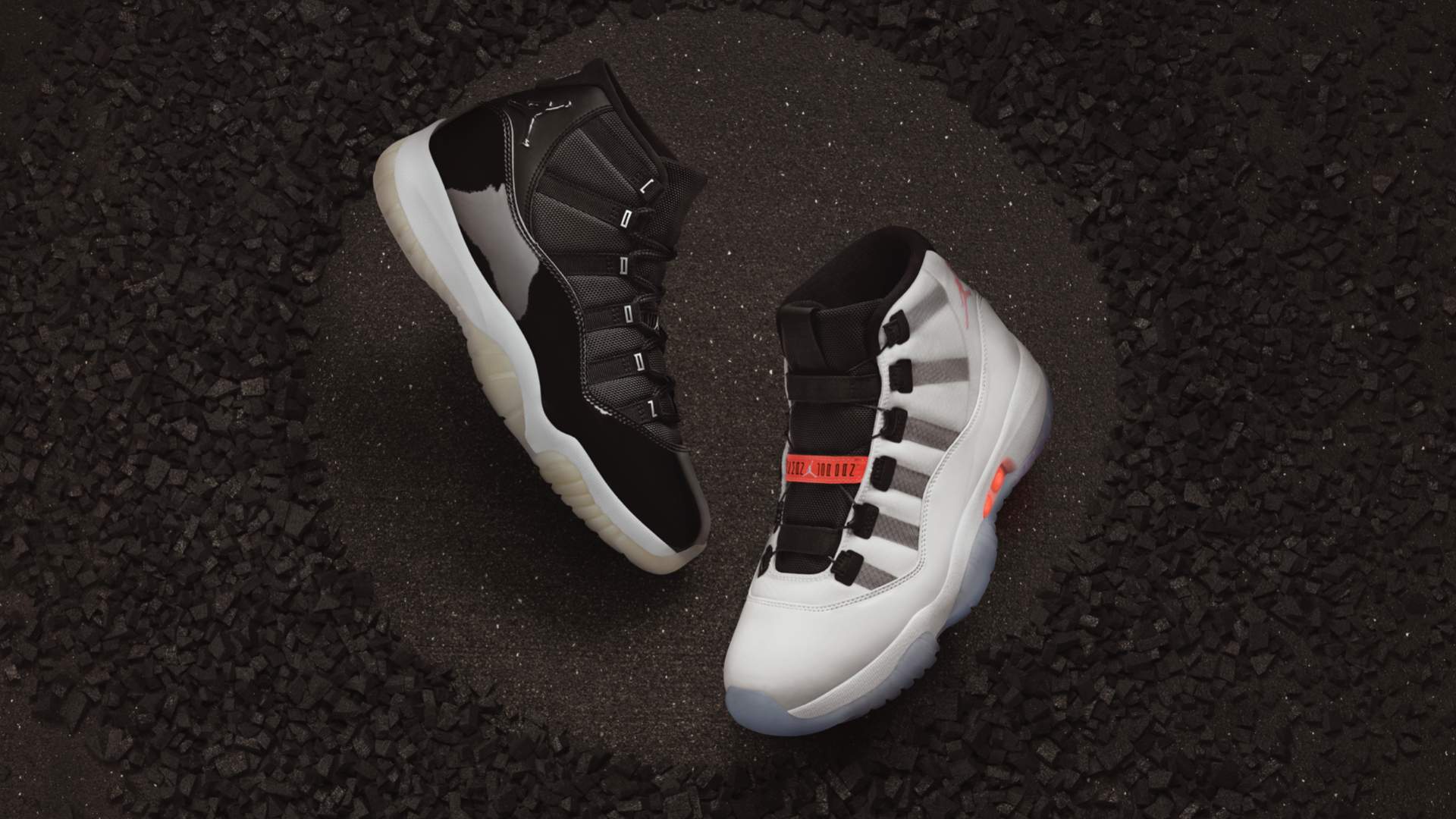
Tinker Portrait via Nick DePaula
Sketch shots via Complex, Jordan Brand & Nick DePaula
Game shots via Getty
Retro release shots via StockX
Detailed product shots via Nike

